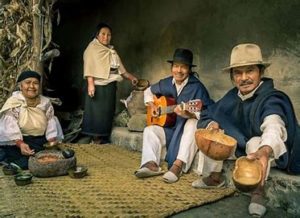Ecuadorian Traditional Dress
Let’s embark on a colorful journey into the heart of Ecuadorian culture, where the vibrant tapestry of traditional dress from the mountainous regions, notably from Otavalo, weaves together history, identity, and cultural pride. These intricately crafted garments serve as vibrant reflections of Ecuador’s rich heritage.
The traditional dress o is a visual symphony—a kaleidoscope of colors, textures, and intricate designs that resonate with cultural significance. The iconic garments worn by both men and women portray a distinct identity deeply rooted in indigenous traditions.
The traditional dress of Otavalo women, known as the “Anaco,” is a majestic, embroidered blouse adorned with vibrant, intricate patterns that vary in design and symbolism. Paired with a long, flowing skirt called the “Pollera,” these garments celebrate femininity and cultural pride.


For Otavalo men, the traditional attire includes the “Chakana,” a beautifully woven poncho that showcases intricate motifs and colors. Paired with white pants, this attire symbolizes masculinity and cultural heritage, often complemented by finely crafted hats.

Every element of the traditional dress carries profound symbolism. From the patterns woven into the fabric to the colors used, each detail represents aspects of nature, spirituality, and ancestral knowledge passed down through generations. it’s a living heritage that binds communities, preserving their identity amidst modernity. It serves as a visual narrative, connecting Ecuadorians to their roots and fostering a sense of cultural belonging.
The preservation of traditional attire isn’t merely about fashion; it’s about safeguarding Ecuador’s cultural legacy. Artisans dedicated to the craft ensure that these garments continue to be handcrafted, preserving ancient techniques and ensuring their legacy endures.
By embracing and proudly wearing their traditional dress, Ecuadorians reinforce their cultural pride and identity. These garments are a reflection of a vibrant and resilient community.

In the traditional dress , we witness not just attire, but a cultural legacy—a testament to Ecuador’s diverse heritage and the enduring spirit of its people.



